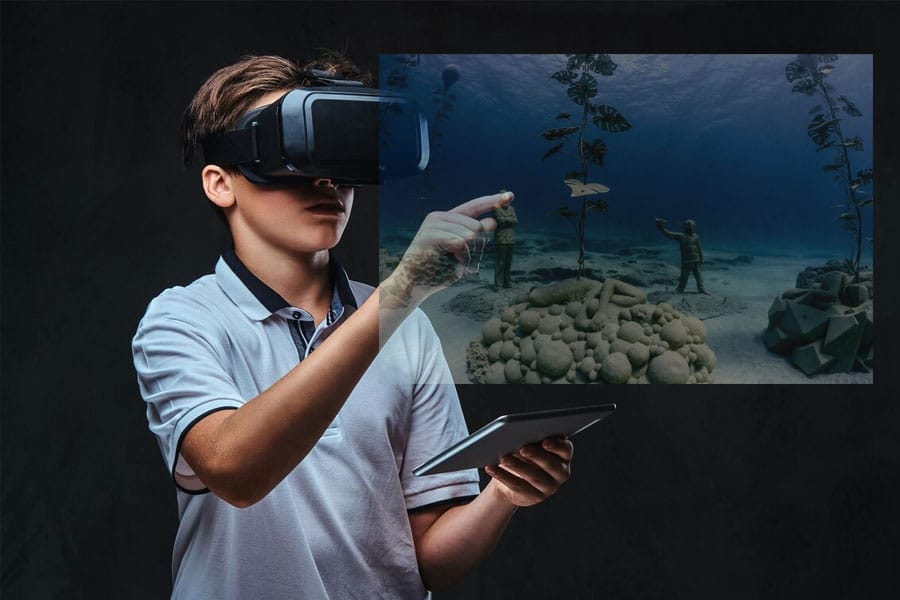
Introduction
In recent years, 360 video tours have emerged as an innovative way for businesses and organizations to showcase their spaces, products, and experiences. These immersive tours allow users to explore environments interactively, providing a unique perspective that traditional media cannot match. A critical question arises: Are 360 video tours interactive? This article will explore the interactive nature of 360 video tours, how they enhance user engagement, and the various features that make them a powerful tool for marketing and communication.
Understanding 360 Video Tours
What Are 360 Video Tours?
360 video tours are interactive multimedia presentations that capture panoramic views of spaces using specialized cameras. Unlike traditional videos that offer a linear viewing experience, 360 tours allow users to navigate through environments at their own pace. Users can control their perspective by clicking and dragging or using navigation arrows, creating a sense of presence and immersion.
The Interactive Element
The interactivity of 360 video tours is one of their most significant advantages. By allowing users to explore environments in real-time, these tours provide a more engaging experience compared to static images or standard videos. Users can look around in all directions, zoom in on specific areas, and interact with various elements within the tour.
Features That Enhance Interactivity
1. Hotspots
One of the key features that contribute to the interactivity of 360 video tours is the use of hotspots. Hotspots are clickable elements within the virtual environment that provide additional information or functionality.
- Information Overlays: When users click on a hotspot, they can access detailed information about specific objects or areas within the tour. For example, in a museum tour, clicking on an artifact might display its history, significance, or related images.
- Multimedia Integration: Hotspots can also link to multimedia content such as videos, audio clips, or images that further enhance the user’s understanding of the space.
2. Navigation Controls
Interactive navigation controls allow users to move seamlessly through the tour.
- Scene Transitions: Users can transition between different scenes or areas within the virtual tour with just one click. This feature allows for a more dynamic exploration experience and encourages users to discover various aspects of the environment.
- Free Movement: Many 360 video tours enable users to move freely within the space, providing a sense of autonomy and control over their exploration.
3. Interactive Floor Plans
Some advanced 360 video tours incorporate interactive floor plans that enhance navigation.
- Visual Guidance: Users can click on specific rooms or areas within a floor plan to jump directly to those locations in the tour. This feature simplifies navigation and helps users understand the layout of larger spaces.
- Contextual Information: Floor plans can also include annotations or descriptions that provide context about each area, enriching the overall experience.
4. VR Compatibility
Many 360 video tours are designed to be compatible with virtual reality (VR) headsets.
- Immersive Experience: When viewed through VR headsets like Oculus Rift or HTC Vive, users can experience an even greater level of immersion. They can look around naturally as if they were physically present in the environment.
- Enhanced Interactivity: VR compatibility often includes additional interactive elements tailored for headset use, such as hand-tracking controls that allow users to manipulate objects or navigate through spaces using gestures.
Benefits of Interactivity in 360 Video Tours
Increased Engagement
The interactive nature of 360 video tours significantly boosts user engagement.
- Active Participation: By allowing users to explore at their own pace and interact with various elements, these tours encourage active participation rather than passive viewing.
- Longer Dwell Times: Engaging content keeps users on the platform longer. Studies show that immersive experiences lead to increased dwell times, which correlate with higher conversion rates.
Enhanced Learning Opportunities
Interactive 360 video tours are particularly effective for educational purposes.
- Deeper Understanding: Users can gain a deeper understanding of complex subjects through interactive elements that provide context and additional information.
- Tailored Learning Experiences: Educators can create customized learning paths by incorporating quizzes and assessments within the tour, allowing students to engage with content actively.
Improved Marketing Effectiveness
For businesses and organizations, interactivity enhances marketing strategies significantly.
- Showcasing Unique Features: Real estate agents can highlight unique property features through hotspots that provide detailed descriptions or images when clicked.
- Building Trust and Transparency: Providing an interactive experience fosters transparency and builds trust among potential customers by allowing them to explore properties thoroughly before making decisions.
Implementing Interactive 360 Video Tours
To effectively implement interactive 360 video tours, organizations should consider several best practices:
High-Quality Production
Investing in high-quality production is essential for creating engaging virtual tours:
- Resolution Matters: Use high-resolution cameras capable of capturing detailed footage. Aim for at least 4K resolution to ensure clarity when viewed online or through VR headsets.
- Stabilization Techniques: Employ stabilization equipment during filming to avoid shaky footage that detracts from user experience.
User-Friendly Navigation
Ensure that your 360 video tour is easy to navigate:
- Intuitive Controls: Implement clear controls that allow users to move through the tour seamlessly. Incorporate navigation arrows or hotspots that guide users through different sections.
- Mobile Optimization: Ensure that your virtual tour is accessible on various devices—including smartphones and tablets—to reach a broader audience.
Integrate Interactive Elements
Adding interactive features enhances user engagement:
- Hotspots with Information: Include clickable hotspots that provide additional information about specific exhibits or artifacts when selected.
- Quizzes and Polls: Engage users by including quizzes or polls related to the content of the tour. This interactive element encourages participation and reinforces learning.
Promote Your Tour Effectively
Once your 360 video tour is complete, promote it effectively:
- Social Media Campaigns: Share snippets of your virtual tour on social media platforms with engaging captions that encourage followers to explore further.
- Email Newsletters: Include links to your virtual tour in email newsletters sent to subscribers, enticing them with exclusive content or sneak peeks at upcoming exhibitions.
Conclusion
In conclusion, 360 video tours are highly interactive experiences that significantly enhance user engagement and satisfaction. By providing realistic experiences that allow users to explore environments interactively—through features like hotspots, intuitive navigation controls, and multimedia integration—these virtual tools empower businesses and organizations across various sectors. To maximize the impact of interactive 360 video tours, creators should focus on high-quality production values, user-friendly navigation features, engaging interactive elements, and effective promotional strategies while measuring success through engagement metrics and user feedback. As technology continues evolving and more organizations embrace immersive experiences like 360 video tours as part of their marketing strategies or educational efforts, understanding best practices for implementation will be essential for maximizing impact and creating lasting impressions on audiences worldwide.




